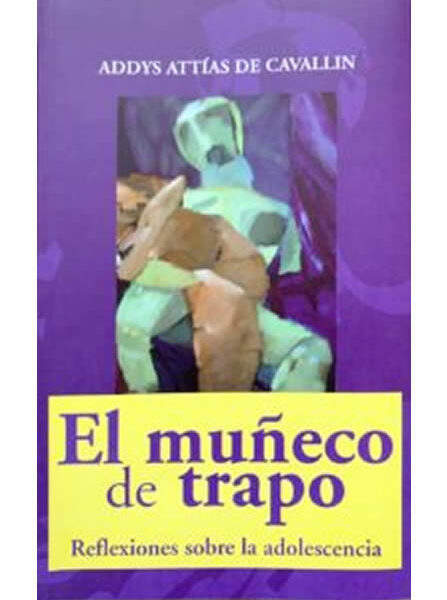Vincenzo Bonaminio (Italia)
Congreso de la EPF Vilamura Portugal, 2005
The methodological, conceptual and clinical relevance of the connection between Interpretation and Construction today was anticipated by Freud himself in 1937. Looking back at over fifty years of his work, he foreshadowed a way of conceiving psychoanalytical work that appears to be widely shared today in the extended and multifaceted scenario of current psychoanalysis: ” the work of analysis – he wrote – consists of two quite different portions,…it is carried on in two separate localities, [and] involves two people, to each of whom a different task is assigned “.
The “dialogical” pre-figuration of psychoanalytical work, outlined in “Constructions in analysis”, sets the scene for some present-day clinical and theoretical controversies in psychoanalysis. Nonetheless, for Freud the patient’s “task” basically remained that of remembering. Thus, a process that throughout his work came to encompass the wide spectrum ranging from pre-representational and pre-linguistic, bodily and somatic, memories to proper representations. And, moreover, in the repetition in the transference (as a way of remembering) and in the patient’s working-through (itself a form of repetition, albeit modified by interpretation), there is the actualization of the past in the present of the analytic relationship.
The “task of the analyst” therefore ” is to make out what has been forgotten from the traces which it has left behind or, more correctly, to construct it “. Through the famous archaeological metaphor, Freud compares the analyst’s “work of construction, or, if it is preferred, of reconstruction” to that of the archaeologist. The advantage for the analyst is that he is guided by the transference in his search for past events. *
“Construction” and “reconstruction” tend toward a new conceptualization related to the various articulations and transformations undergone by the concept of transference and its operative dimension in the analytical situation. The central importance of transference interpretation and its mutative value (originating from Strachey’s 1934 seminal paper), the legitimacy and location of extra-transference interpretations and of other non-interpretive interventions become the “crossroad” and “battleground” of different orientations which span the whole field of the psychoanalytical debate. *
Interpretation was from the very beginning at the heart of the Freudian doctrine and technique, and of their contemporary developments; psychoanalysis itself might be defined in terms of interpretation, “as the bringing out of the latent meaning of a given material” . Freud’s approach to dreams represents the first example and, at the same time, the “paradigm” of interpretation.
Interpretation spans not only the whole temporal horizon of psychoanalysis, but also its “spatial” dimension as a science. It covers and permeates its clinical and theoretical foundations. In its centrality for psychoanalysis, interpretation is inseparable from the treatment method, the therapeutic factors, the concepts of setting, transference, resistance and defence, the very nature of psychoanalysis itself, both scientific and/or hermeneutic, one-person and/or two-person, intrapsychic and intersubjective.
If interpretation and construction outline the area of analytical work from the analyst’s side, they show even more intrinsic connections: on one hand, each interpretation of the analysand’s material contains to a larger or smaller extent, but inevitably, some “work of construction” on the part of the analyst. This happens through his evenly suspended attention, his listening, his listening to his own listening; indeed all that comes from his countertransference feelings and thoughts, transformed, remodelled and mediated by his reference theories, both “official” and “private”. On the other hand, each construction is the outcome of an interpretive process, “a conjecture which awaits examination, confirmation or rejection” by the analysand’s transference. “Only the further course of analysis enable us to decide whether our constructions are correct or unserviceable”, anticipated Freud in 1937, foreshadowing, once again, the contemporary conceptualization of the psychoanalytic process in its spiral-like dimension which involves both analysand and the analyst in the deconstruction, construction/reconstruction, re-signification process. Construction, as a continuous transformation and elaboration belongs primarily also to the analysand and his mental activity.
In this context based on the centrality of the transference/countertransference relationship the construction/reconstruction activity to which patient and analyst participate each with his own task, implies that analytical work is circular and not simply retrospective in one linear direction. Two major aspects are related to this issue: the dialectical relationship between intrapsychic and intersubjective and the question of time, in particular the concept of Nachträglichkeit (après coup).
In the theoretical and conceptual path outlined above, which could be one of the possible tracks along which to develop the debate of our conference, construction and interpretation are seen as different but interdependent moments of one single process with different and oscillating intensity grades: on the analyst’s side, construction is seen as understanding, selecting and organizing the transference material and locating it in the psychoanalytical relationship from which a “selected fact” emerges as a basis for an interpretation to be offered to the patient.
A wide-ranging field of debate and controversy opens up here. These debates and controversies cannot be considered as just “technical”. They include different conceptions of the psychoanalytical process, of its aims and therapeutic factors: what, when, how to interpret; the timing of interpretations, the meaning of the so-called “deep interpretation” or, on the contrary, that of working “in the neighborhood”, the risks of the “early interpretation”, or the value of the “complete interpretation” , the oscillation between holding (Winnicott) / containment (Bion) and interpretation. More generally, there are also on one side the questions of the centrality and the role to assign to the transference interpretation in the here-and-now, which characterizes especially the tradition of the English school. On the other, there is also the distinction between the interpretations of the transference and in the transference, i.e., the interpretations formulated in the transference framework ( dans le cadre), according to the French orientation.
These and other specific issues will be the focus of plenary sessions, panels, small group discussions and individual presentations on the main theme in the forthcoming 18 th – the 4 th New Style – European Psychoanalytic Federation Annual Conference.


